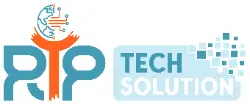Agile software development is an iterative and flexible approach to software development that prioritizes delivering working software quickly and efficiently. Agile software development has revolutionized the software development process, transforming the way software is created, managed, and delivered. In this blog post, we will explore the key concepts of agile software development, its benefits, and its challenges.
What is Agile Software Development?
Agile software development is an approach that values collaboration, communication, and feedback. It prioritizes delivering working software and responding to change over following a plan. The Agile Manifesto, which values individuals and interactions, working software, customer collaboration, and responding to change over processes and tools, underpins agile software development.
Agile software development follows an iterative process that consists of several stages. The first stage is requirements analysis, during which the development team works with the product owner to identify the project requirements and goals. The requirements are then broken down into user stories, which are brief descriptions of what the user wants to accomplish with the software.
Planning is the second stage, during which the development team estimates the effort required to deliver each user story and prioritizes them based on their importance to the customer. The team then plans the work that needs to be done in the upcoming sprint.
The third stage is sprint execution, during which the team members work on the tasks assigned to them during the sprint. The team meets daily for a stand-up meeting to discuss progress, obstacles, and next steps.
The fourth stage is review and feedback, during which the team reviews the work that was completed and demonstrates the working software to the product owner. The product owner provides feedback, which the team incorporates into the next sprint.
The final stage is the retrospective, during which the team holds a meeting to discuss what went well and what can be improved in the next sprint.
Key Concepts of Agile Software Development
Agile software development emphasizes team working, collaboration, and communication. Agile teams are typically small and self-organizing, with team members taking on different roles based on their skills and expertise. The team members work closely together and communicate frequently to ensure that everyone is aligned with the project goals. Agile teams also value feedback from all team members, including the product owner, and use it to continuously improve the development process.
One of the key features of agile software development is the feedback loop. The feedback loop involves continuously reviewing and improving the development process. The team holds regular retrospectives to identify areas for improvement and to make changes to the development process. This allows the team to continuously improve their work and deliver better software to the customer.
Agile software development puts great emphasis on delivering working software. Instead of focusing on creating a comprehensive plan at the beginning of the project, agile development prioritizes delivering small increments of working software that meet the customer’s needs. This approach ensures that the customer is involved in the software development life cycle and can provide feedback on the working software, which the development team can incorporate into the next iteration.
Agile software development also prioritizes responding to change over following a plan. This approach acknowledges that requirements can change, and the development team needs to be flexible enough to adapt to those changes. Agile development also encourages experimentation and risk-taking, allowing the development team to try new approaches and find innovative solutions to problems.
Benefits of Agile Software Development
Agile software development has many benefits. It enables businesses to respond quickly to changing requirements and market conditions, delivering working software that meets the customer’s needs. Agile development also encourages teamwork, communication, and collaboration, which can lead to a more productive and positive work environment. Agile development can also lead to a better understanding of the project requirements, resulting in better quality software and satisfied customers.
Agile software development also helps reduce project risk. By delivering small increments of working software, the development team can identify potential issues and risks early on in the development process and address them before they become significant problems. This approach allows the development team to make informed decisions and minimize the impact of any issues on the project’s schedule and budget.
The Agile process also helps improve customer satisfaction. By involving the customer in the development process and delivering working software quickly, the project management can ensure that the customer’s needs are met, and the software meets their expectations. The customer can provide feedback on the working software, which the development team can incorporate into the next iteration, resulting in better quality software and a more satisfied customer.
Agile software development also helps improve the development team’s morale and productivity. By working in small increments and delivering working software quickly, the development team can see the results of their efforts and feel a sense of accomplishment. This approach can help motivate the team and lead to higher productivity and job satisfaction.
Challenges of Agile Software Development
Agile software development is not without its challenges. One of the challenges is getting the team members to adopt an agile mindset and embrace the new approach. The traditional waterfall approach to software development, which involves a comprehensive plan at the beginning of the project, is deeply ingrained in many developers’ minds, and it can be difficult to change this mindset.
Another challenge is communication and collaboration. Agile development emphasizes teamwork and communication, and it can be challenging to ensure that all team members are aligned with the project goals and understand their roles and responsibilities. Communication can be even more challenging when team members are working remotely, and the lack of face-to-face interaction can make it harder to build trust and rapport.
Another challenge is ensuring that the team members have the necessary skills and expertise to deliver high-quality software. Agile development requires a high level of skill and experience, and it can be challenging to find developers with the necessary skills and experience to work in an agile environment.
In conclusion, agile software development has transformed the software development process, providing businesses with a flexible, collaborative, and efficient approach to delivering high-quality software. Despite its challenges, agile development offers numerous benefits, including faster time-to-market, improved quality software, and increased customer satisfaction.
If you’re interested in adopting agile software development for your business, consider working with RTP Tech Solutions. Our team of experienced developers can help you implement an agile approach that meets your business needs and helps you achieve your goals. Contact us today to learn more.



